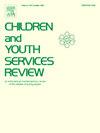Predicting children migrants’ social exclusion risk through an innovative digital tool: Application of machine learning methods to Spanish residential centres
IF 1.7
2区 社会学
Q1 FAMILY STUDIES
引用次数: 0
Abstract
In the improvement of social care, the adaptation of services and procedures to the analysis of the best predictors of the risk of social exclusion for Unaccompanied Migrant Children plays an important role. This study aims to identify the best predictors of social exclusion among unaccompanied migrant children, to create a digital tool that integrates the complex reality of unaccompanied migrant children in shelters in Spain. Using a logistic regression model, an innovative risk assessment tool was created ad hoc for risk assessment within institutional care centres. A sample of 209 children who had been in residential care in Andalusia in 2021 was selected retrospectively. After applying a feature selection method, it was found that 24 variables are the most predictive within the educational, social, psychological or occupational areas; 8 belonged to risk factors and 16 to protective factors. Specifically, accessing intercultural mediation, having previous criminal records, bringing original documentation from their origin countries, using a sexualized vocabulary, having a good educational level and having economic resources for autonomy had a higher regression coefficient (Beta value), which means they are determinants in promoting better social inclusion. This pioneering study demonstrates that this digital tool offers a promising new method for the efficient screening of concerns for social professionals regarding social exclusion among unaccompanied migrant children in residential centres. One of the most suggestive findings of this study is the high incidence of protective factors in preventing the risk of social exclusion. Consequently, priority should be given to policies supporting protective factors related to social resources.
通过创新的数字工具预测儿童移民的社会排斥风险:机器学习方法在西班牙住宿中心的应用
在改善社会关怀方面,使服务和程序适应对无陪伴移民儿童社会排斥风险的最佳预测因素的分析,发挥着重要作用。本研究旨在确定无人陪伴移民儿童社会排斥的最佳预测因素,创建一个数字工具,整合西班牙收容所无人陪伴移民儿童的复杂现实。利用逻辑回归模型,创建了一种创新的风险评估工具,专门用于机构护理中心的风险评估。回顾性选择了2021年在安达卢西亚接受寄宿护理的209名儿童作为样本。应用特征选择方法,发现24个变量在教育、社会、心理和职业领域最具预测性;8项属于危险因素,16项属于保护因素。具体而言,获得跨文化调解、有犯罪前科、从原籍国携带原始文件、使用性化词汇、具有良好的教育水平和拥有自治的经济资源具有更高的回归系数(Beta值),这意味着它们是促进更好的社会包容的决定因素。这项开创性的研究表明,这一数字工具为社会专业人员提供了一种很有前途的新方法,可以有效地筛选寄宿中心中无人陪伴的流动儿童的社会排斥问题。这项研究最具启发性的发现之一是,在预防社会排斥风险方面,保护性因素的发生率很高。因此,应优先考虑支持与社会资源有关的保护因素的政策。
本文章由计算机程序翻译,如有差异,请以英文原文为准。
求助全文
约1分钟内获得全文
求助全文
来源期刊

Children and Youth Services Review
Multiple-
CiteScore
6.30
自引率
6.10%
发文量
303
期刊介绍:
Children and Youth Services Review is an interdisciplinary forum for critical scholarship regarding service programs for children and youth. The journal will publish full-length articles, current research and policy notes, and book reviews.
 求助内容:
求助内容: 应助结果提醒方式:
应助结果提醒方式:


